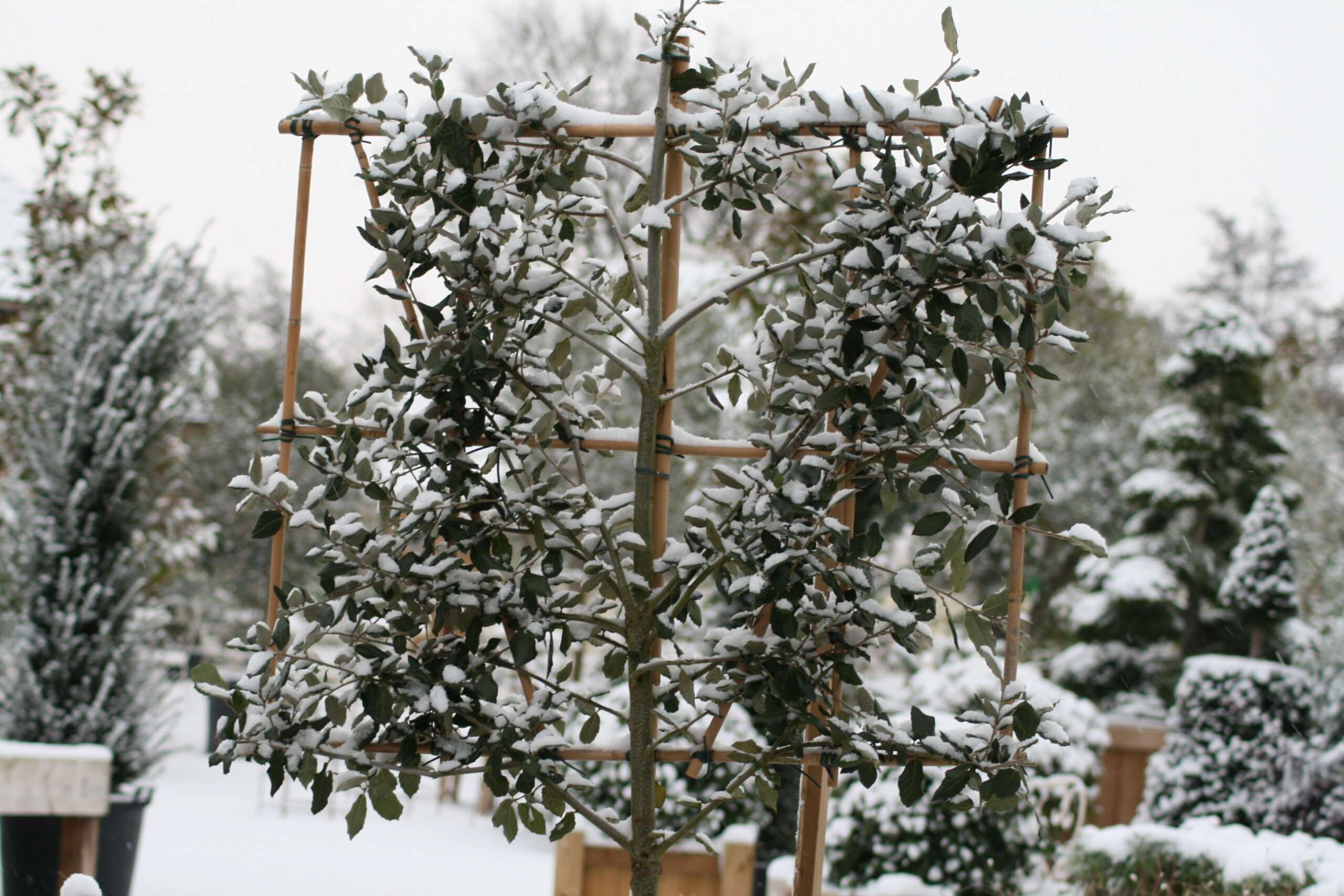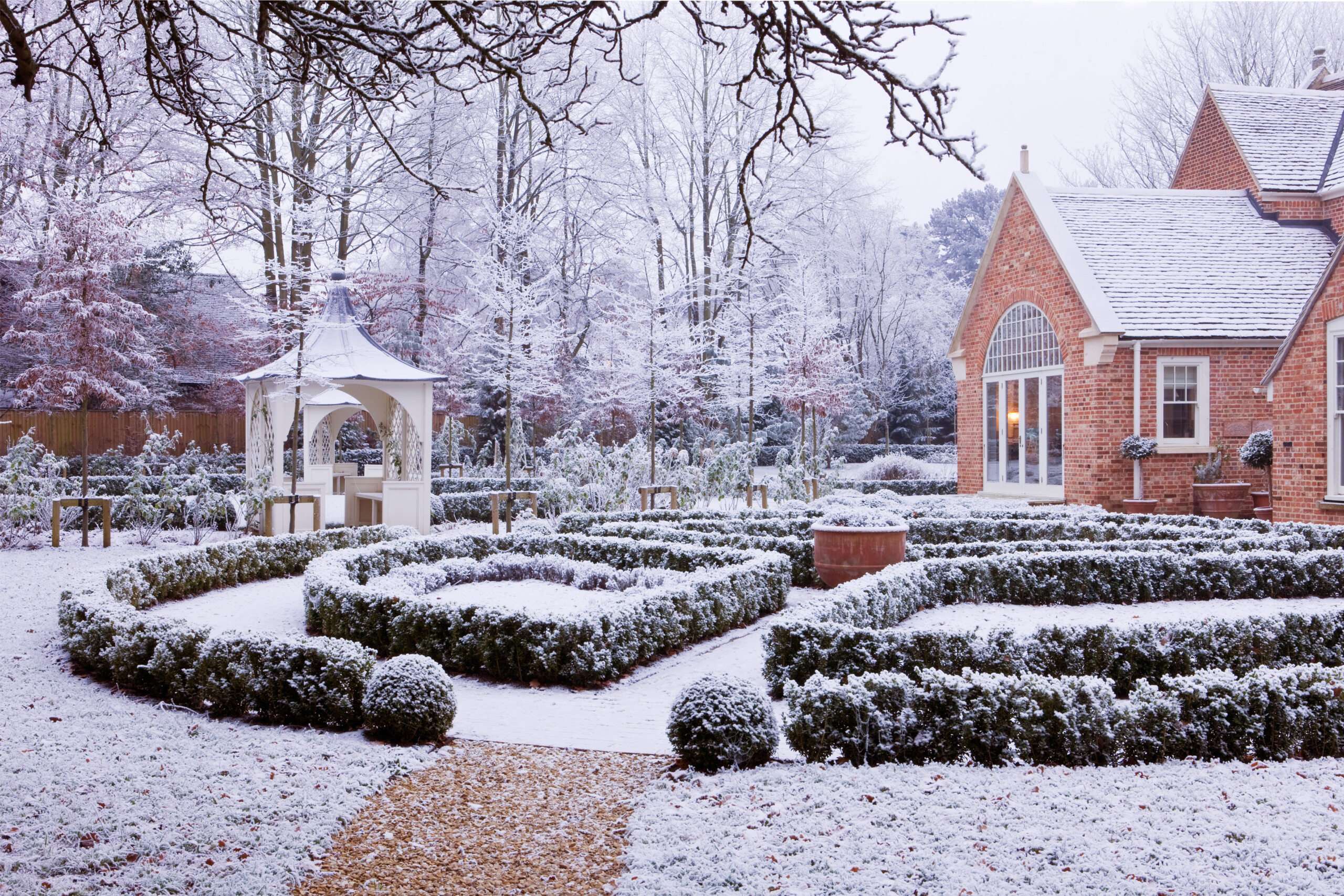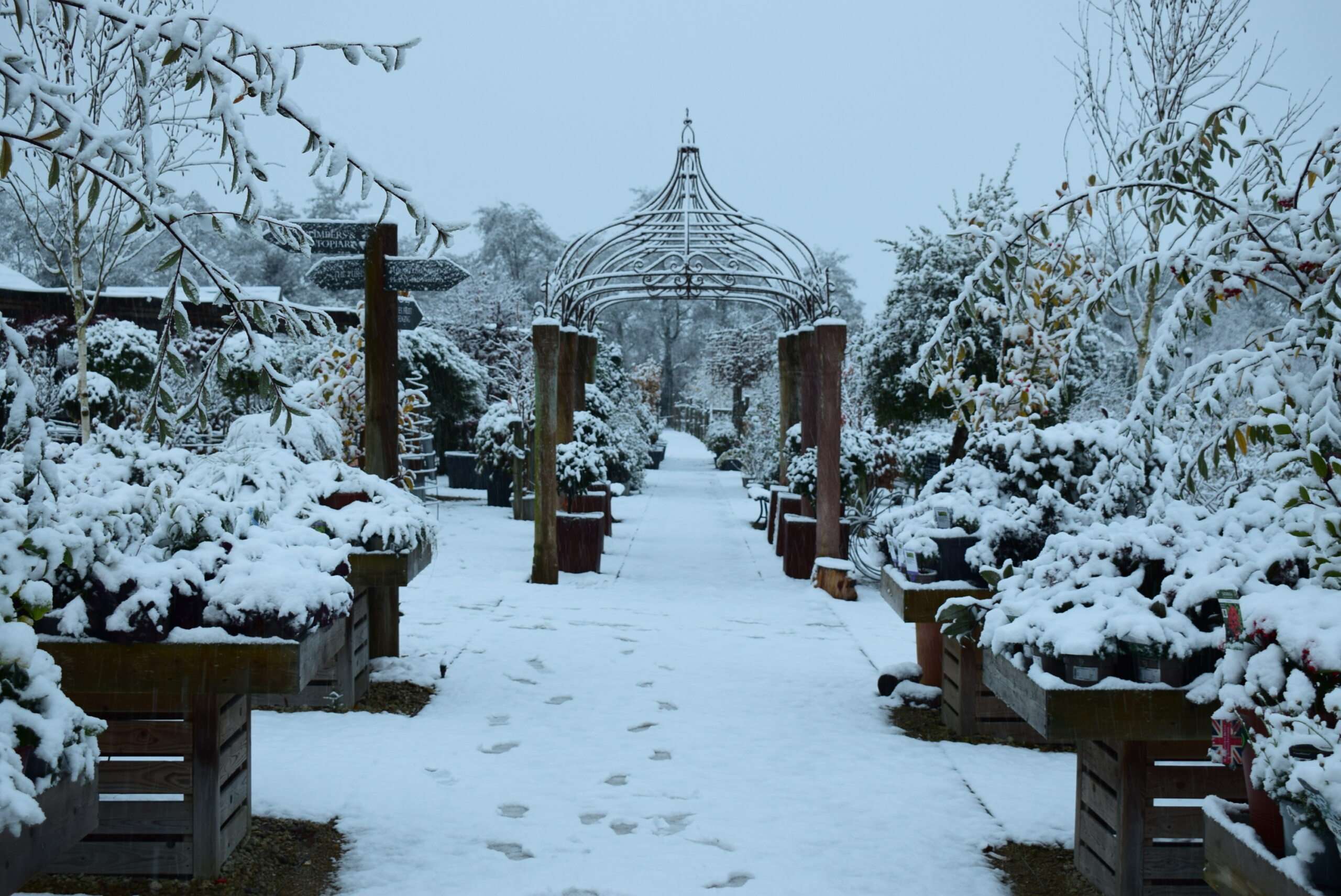January Gardening Tips
Happy New Year. I hope everyone enjoyed the festivities and found time for some well-earned rest because now is the time to get stuck back into our gardens.
From the mulching of borders to repairing damaged fencing and planning changes in the garden, there are plenty of reasons to brave the weather and get gardening this January. We’ve already seen some snow this year which can actually be good for the garden by killing unwanted pests and protecting our plants from severe frosts. However, action should be taken for really heavy snowdrifts, such as brushing snow off evergreen hedging and climbers to prevent damage. Despite the challenging weather that January can bring, here are our top gardening tips for the new year.
- Check tree ties and stakes – Young trees and shrubs that are being supported by stakes and ties need to be checked regularly, especially when there have been strong winds. If the stakes are unstable or the ties too loose, they will not support the tree or shrub and they will move around in the wind causing gaps around the rootball. This will cause water to pool and rot the roots or the lower areas of the stem. However, don’t allow the ties to become too tight either as that will restrict the growth of the plant and cause it damage.
- Leave plenty of time for hardwood cuttings – At this time of year, you can take hardwood cuttings from deciduous shrubs such as Cornus (dogwoods), willows, roses, flowering currants and Forsythia. Look for a well-ripened, pencil-thick shoot and remove it just above a node, leaf joint or bud using secateurs. Then, prepare the cutting by removing the shoot tip (the top of the cutting) just above a bud and trimming the bottom just below another bud – aim for the cutting to be around 20-30cm long. If you have a rooting compound, dip the bottom of the cutting into it before planting the cutting into a pot at about 10cm depth. Use a loam based cutting compost and overwinter in a cold frame. Keep the cuttings watered and shoots should start to appear next spring. Leave the new plants for at least 12 months before transplanting.
- Plant deciduous hedging plants – Hedging such as beech, hawthorn and hornbeam can be planted now. Bare root plants, often known as ‘whips’, are the most cost-effective way but don’t plant them if the ground is waterlogged or frozen. Dig a small trench along the length of the area where you will put your hedging. Make the trench at least two spade widths wide and one spade depth. Place well-rotted farmyard manure into the bottom of the trench to give the plants a good start. Space the plants out equally along the trench, fill with the removed soil and firm in before watering.
- Winter prune wisteria – Wisteria is pruned twice a year, once in summer and once in winter. At this time of year, we shorten the side shoots from the main stems, cutting to two or three buds from the main stem. When pruning in winter, it is easier to see what you are doing and pruning now will encourage the formation of flower buds ready for flowering later in the year.
- Protect alpine plants – It’s not the cold that will harm alpines in winter but the winter rains. If you haven’t done so already, put them under a shelter to keep off the worst of the rain.
- Sow sweet peas – If you didn’t get this job done in autumn, then now is a good time to sow sweet peas. Sow the seeds in peat-free compost in long sweet pea tubes as they like a long root run. The cardboard insides of toilet rolls make excellent planting tubes! Keep them watered and place in a cool, light room or sheltered cold frame.
- Complete winter digging of the vegetable beds – If your vegetable beds are empty, or you have created new ones, cultivating them sooner rather than later will expose them to the winter weather for as long as possible, breaking down large clods of earth, improving the soil structure and making it easier to work in spring. Don’t try digging the soil if it is frozen or very wet as this won’t help in the long run. As you dig over the soil, add plenty of organic matter and allow the worms to work the soil for you.
- Mulch your borders and flower beds – This is one of the best things you can do for your garden in the colder months and can be a satisfying job that makes the garden look tidy and brings many benefits. Laying an organic mulch over the soil in your borders and flower beds will give the soil additional nutrients, insulate plants and their roots, warm the soil and help keep weeds at bay or at least make them easier to remove! All you need to do is spread organic matter, such as well-rotted garden compost, leaf mould, fine chip bark mulch or even general compost, around 5-10cm deep over the borders, beds and around the base of your plants. The soil life, such as worms, will do the rest working it into the soil and giving your plants a head start come the spring.
- Start early potatoes – Seed potatoes will now be available and can now be chitted (started into growth) before being planted in March. Start them off by laying them in trays with the ‘rose’ end uppermost. Place them in a light, cool, frost-free place and after two to three weeks, shoots should start to sprout. To get the best crop, thin the shoots to two or three per tuber.
- Prune outdoor grapevines – If you haven’t had the chance yet, then try to get this job done this month. All lateral shoots should be pruned back to two or three buds and leading shoots pruned back to within the allowed space. If grapevines are pruned late, they can ‘bleed’ which is where the sap will seep out of the pruning cuts.
Happy gardening!
If you have any further questions or would like some assistance with your garden, then visit our Nicholsons Garden Maintenance webpage.




